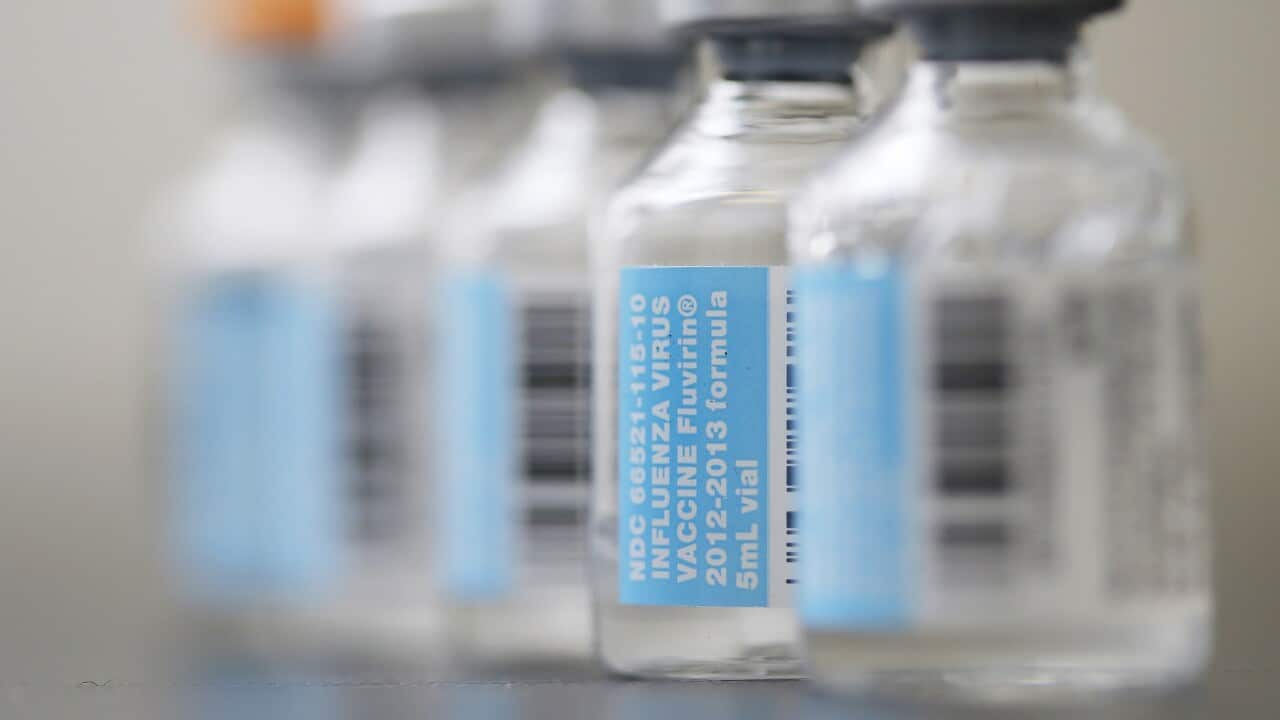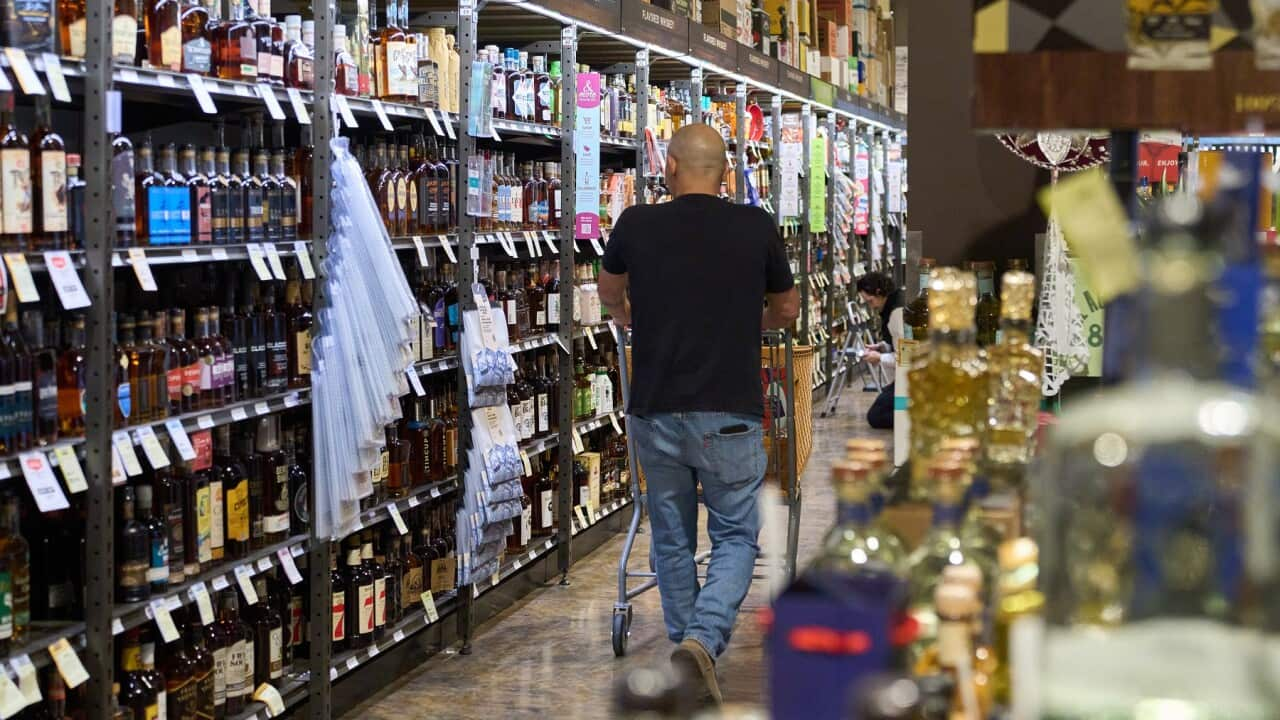TRANSCRIPT
"Have you got a moment?"
"Yeah, what do you want love?"
"Can I talk to you about melanoma?"
"No I don't know her darling. "
"I'm sorry? "
"I don't know her. "
"Who? "
"Melano- what was her second name? "
"No - melanoma, it's a form of skin cancer. "
"Oh I'm sorr-"
A deadly cancer being joked about on Tik Tok.
"Here's my dilemma while I'm tanning. I'm really trying to work on my tan lines. Like these triangle bikini lines, I think they are so cute and I must have the most dramatic tan lines in the world. I think it is adorable."
Suntanning trends with the hashtag #sunburnttanlines have garnered over two million views on Tik Tok this summer.
This comes despite others on social media advocating on the harmful effects of this tanning trend.
"We have to talk about the tan-line trend. And if it is dominating your algorithm please watch this video, I hope by what I'm sharing it can make you more informed and make educated choice on if you want to be a part of this trend. It is so dangerous. In Australia, we have the highest rate of melanoma. Melanoma is skin cancer in the whole world. Two thousand Australians die every year from skin cancer in Australia. There is no such thing as a healthy tan."
Dr Andrew Dettrick is Adjunct Associate Professor at the University of the Sunshine Coast.
"We were a little disturbed to see this trend on Tik Tok of young people, particularly the girls, deliberately going out and getting suntan lines. And that led us to think it was time to try once again to continue to spread the message about sun safety. And just to remind people on how damaging the sun and UV radiation is."
Also a skin cancer researcher and health pathologist, Dr Dettrick says there's a campaign by the government and the Cancer Council to combat this issue.
"The 'End the Trend' campaign is a collective group of people who are trying to reverse that message. We have to try to get back to the understanding that there is no such thing as a safe tan. Tanned skin is damaged skin. UV radiation causes melanoma, BCC, SCC, eye damage and also premature aging. I think that's a message that seems to be lost among these young people."
This January marks a decade since commercial solariums were banned in Australia.
Despite the ban, Australia’s culture continues to glamorise a suntan, and commercial solariums are making a comeback.
They feature modified sunbeds called collariums, or collagen beds, and have been recently being promoted as a healthy alternative to solariums despite emitting ultraviolet radiation.
Professor Anne Cust is the Chair of Cancer Council’s National Skin Cancer Committee.
"They seem to be a rebranded solarium so they're a device that you lie in and it emits UV radiation, predominantly UVA radiation which we know does penetrate the skin, causes DNA damage, actually breaks down collagen and causes aging but these devices are often marketed as being healthy. We know that devices emitting UV radiation for the purpose of tanning is not healthy."
Also known as sunbeds or tanning beds, these are classified by the International Agency for Research on Cancer in the highest risk category, as Group 1 and carcinogenic to humans.
Overexposure to UV radiation causes up to 95 per cent of melanomas, the deadliest form of skin cancer.
Professor Cust says over 2 million Australians, or 9.4 per cent of the population, attempted to suntan last year.
A Cancer Council-funded survey was conducted by the Australian Bureau of Statistics last year.
Almost 1.5 million respondents (6.4%) had been sunburnt in the week before being surveyed.
"Only half of Australians were using three or more forms of sun protection when exposed to sun during the peak UV periods, and young people were less likely to use adequate sun protection. And we found that one in ten people were attempting to get a tan. And that was higher for young Australians aged 18-24 so one in five young Australians are trying to get a suntan."
There are five forms of sun protection recommended by the Cancer Council.
They are protective clothing, using broad-spectrum, water-resistant SPF-50 or SPF-50+ sunscreen, wearing a broad-brimmed hat, seeking shade and wearing sunglasses.
While commercial solariums have been banned for the past decade, private ownership and personal use of solariums remains legal and unregulated.
"Solariums work by producing an artificial and very intense source of UV radiation. It can be as high as 30 or 40 UV index in the commercial solarium. To put that in context, on a nice bright sunny day here in the Sunshine Coast where I live, in the middle of summer the UV index will be 13 or 14. And you can get significant skin damage, sunburn, after less than ten minutes of exposure to that intense sunshine."
Prior to the commercial solarium ban, it was estimated that each year more than 2,800 skin cancer cases and 43 melanoma-related deaths were attributable to solarium use.
Dr Andrew Dettrick says that cost the Australian health system around $3 million.
"Melanoma makes up about 1 in 50 skin cancers and people seem pretty familiar with what melanoma is but they are less familiar with the non-melanoma skin cancers. Non- melanoma skin cancers include BCC and SCC. And it is that group where we've seen this alarming trend and when we uncovered that fact, that the incidence of deaths from melanoma skin cancer had almost doubled, we thought it was very important to publish that. Can you imagine if the number of deaths from any other types of cancer had doubled in only 20 years, I think it would be front page news every day until something is done about it."
Professor Cust says it's really concerning that people are again putting themselves in harm's way by getting intentional tan lines.
"There's no such thing as a safe tan, and when the sunbeds were banned more than a decade ago, a lot of the advocacy for that was through people who had suffered from melanoma and died from melanoma, for example Clare Oliver, who died at a young age from melanoma, who said there is no such thing as a safe tan and a tan is not worth dying for."
Dr Dettrick says people need to learn how to identify dangerous changes on their skin.
"I think one of the things we should all do is get to know your own skin. Get to know the lumps and bumps and spots on your own skin and regularly check your skin for any changes looking out for the ugly duckling. A spot that doesn't look right to you or one that you know has changed. BCC's will tend to look like a little raised pearly lump. SCCs will typically be flat or raised and scaly, and melanoma of course is usually a pigmented spot."
He says skin checks are funded by Medicare, so people can just see their GP to get their spots checked.
"Another one of the trends that we are trying to push back against is that there are no health benefits from tanning. People have asked me what about vitamin D? And in Australia where we've got bright sunshine there is no evidence or benefit from tanning."
As they continue to push back on dangerous trends online, Cancer Council Australia encourages all Australians to be Sun Smart and use all five forms of sun protection when the UV is 3 or above.
"You can look for the Sun Smart app, which is available on all devices. You can actually use it overseas as well but it gives you the real time UV index for the location that you are at. And we recommend using sun protection when the UV index is three or above."













